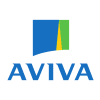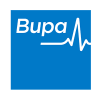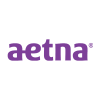DERMATOLOGICAL SURGERY.
Everything you need to know.
Depending on your condition, your consultant will have discussed surgery as an appropriate option to either treat or diagnose your skin problem. Alternative treatments to surgery will have been discussed between you and your doctor during your consultation.
All Stratum Clinics have been designed to offer patients dermatological surgery without having to visit other facilities. Our surgery is on a day-case basis meaning you will not have to stay overnight.
Procedures will be performed under local anaesthetic and you will be awake throughout the procedure. This means that you will be given a small injection directly into the area of skin where you will be operated on. This initially may cause some localised discomfort but will make the area numb and the procedure will then be painless. The procedure usually takes less than 30 minutes.
Please note: this information is for general dermatological surgery. For paediatric surgery, how the child has the procedure and where may be more complicated and will be discussed during the consultation.
Frequently asked questions
All procedures do come with an element of risk. These risks are usually very small but it is important you are aware of them.
Bleeding, Bruising or Infection – Any wound is at risk from bleeding, bruising, infection or breakdown after surgery. After your procedure you will be given a leaflet which explains how to avoid these complications. If you follow the wound care instructions following your surgery, these problems are uncommon.
Pain or discomfort – You may experience some pain when the local anesthetic is being injected, and once this wears off, the area may feel sore.
Scarring – Depending on the procedure, you may be left with a scar. Sometimes a keloid scar develops (this is a raised, lumpy, hard or rubbery scar). If this is a concern, the doctor can discuss this with you in more detail.
Further Surgery – Some conditions may require further surgery at a later date, depending on what is found. In addition, some conditions do have the risk of recurring in the future.
Nerve damage – In very rare cases, or at high risk sites, there may be a very small risk of nerve damage to the nerves running in the area to be operated on. Again, this is not relevant to all procedures, and can be discussed in further detail with your consultant.
If you have had an adverse reaction to a local anaesthetic before (e.g. for dental treatment) it is important to inform your consultant. Your expert dermatologist will cover all these questions, risks and any issues in your consultation before you consent to surgery.
We advise that you bring someone with you when you attend for surgery.
If you are having a procedure on your hands or feet or around your eyes, it would be advisable to ensure you have someone to help you get home.
There are a series of medications which require more complex advice, these will be discussed at your consultation.
Please inform the theatre nurse, before your surgery, if you have previously experienced any adverse events to any procedures, including fainting episodes.
The procedure will be undertaken in one of the operating theatres in our clinics.
On arrival, please book in at the reception desk.
A theatre nurse will take you to the theatre when ready. A doctor will discuss the procedure with you and answer any further questions you may have.
Following your procedure, wound care instructions will be given to. Once the procedure is finished you will be asked to stay in the clinic for 30 minutes to ensure you have recovered sufficiently. You are also advised to refrain from driving until the following day.
The recovery period is 24 to 48 hours after surgery. Please be aware that in the days following the procedure you should arrange to take a few days off work and/or ask someone to help you at home if necessary. You should not be performing any strenuous activities (this includes lifting, exercise and housework). It is important that you should not get the wound wet for 48 hours following the procedure, so please ensure your skin is clean before attending.
Cryosurgery
Cryosurgery can be used to treat benign surface lesions, sun damage and is occasionally used for the treatment of some forms of skin cancer. Liquid Nitrogen is applied to the skin either with a cotton applicator or via a pressurised spray to freeze the surface layers.
After treatment there is a local inflammatory reaction. With a short freeze there is some discomfort then the site swells slightly and feels like a burn before settling after a few hours and the surface layers then peel over a few days. An intense treatment is painful and may require local anaesthesia. A blister will form which may require regular dressings whilst it heals over 10-14 days.
Electrosurgery
High frequency ultrasound is applied to the surface of the skin via a small electrode to heat the surface layers. This treatment may be used alone for benign surface lesions or in combination with curettage to remove a variety of lesions from small keratoses to some forms of skin cancer. Topical or local anaesthesia are usually required. There is a surface wound which requires regular wound care whilst it heals.
Excision
Formally excising a lesion is often the most appropriate procedure depending on the likely pathology. Local anaesthesia is required and usually the wound is repaired with sutures. Sometimes the sutures are buried and are absorbed over a few weeks or surface sutures may be used which require removal after a number of days depending on the site and size of the wound.
The wound may be left to heal naturally and require regular dressings, but this option is fully explained at the time.
Local Flaps and Grafts
Occasionally a lesion may be of a size or in a site where the best functional and/or cosmetic outcome will be achieved by the use of a local skin flap or a skin graft. We use these techniques commonly and if it may be relevant to your care then the options will be discussed fully with you at your consultation.
Mohs’ surgery
Mohs’ micrographic surgery is considered the most effective technique for treating many basal cell carcinomas (BCCs) and squamous cell carcinomas (SCCs), the two most common types of skin cancer. The procedure is done in stages, including lab work, while the patient waits. This allows the removal of all cancerous cells for the highest cure rate while sparing healthy tissue and leaving the smallest possible scar.
All Stratum Clinics can facilitate Mohs’ surgery.




